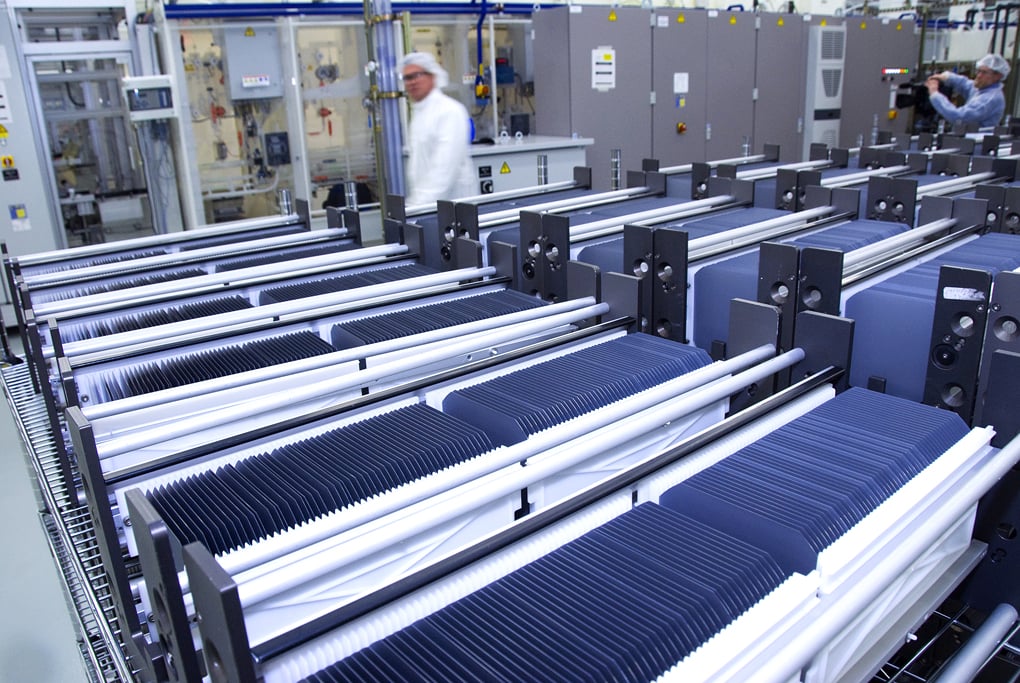
Image source: Flickr
As the solar industry has come of age over the last couple of decades, many manufacturers have sprung up around the world (and a few have gone bust too). Here’s a comparison of the ranges offered by the biggest names on the market:
|
Manufacturer |
Efficiency |
Power |
Product warranty |
Origin |
|
SunPower |
18.4% - 22.7% |
310W - 400W |
25 years |
US |
|
LG |
18.5% - 21.4% |
320W - 400W |
25 years |
South Korea |
|
Panasonic |
19.1% - 19.8% |
245W - 335W |
25 years |
Japan |
|
Canadian Solar |
15.8% - 23.8% (bifacial) |
275W - 420W |
10 years |
Canada |
|
Sharp |
16.5% - 20% |
258W - 370W |
10 years |
Japan |
|
Yingli |
15.7% - 20.1% |
260W - 390W |
10 years |
China |
|
Trina |
16.5% - 19.3% |
270W - 380W |
10 years |
China |
When it comes to choosing which solar panels to go for, there are a few key things to bear in mind:
First off, we will only work with and recommend products from manufacturers who we trust and have found to be reliable. We’re accredited partners with many brands (such as LG and SunPower) and offer a 5 year workmanship guarantee regardless of product type. When designing a system, we suggest the products that are the best for your install and budget.
Ultimately, we believe SunPower makes the best solar panels on the market. They are outstanding in efficiency, output, aesthetics and warranty cover. LG and Panasonic also offer high quality products at the top end of the spectrum, while there are a number of Chinese manufacturers producing great panels at a lower price point.
If you’d like to get in touch, we’d be happy to talk through which are the best types of panel for your project. Just give us a ring on 0118 951 4490.
From sand to sun, there’s quite the process involved in making monocrystalline solar panels.
Quartz sand is heated in an arc furnace, at extremely high temperatures, to produce silicon rocks.
Hundreds of silicon rocks are melted down into cylindrical ingots, adding boron to give the silicon a positive electrical polarity and ensuring the atoms are correctly aligned.
The ingot is sliced into paper-thin wafers with a wire saw.
The sides of the wafer are chopped off to leave an octagonal solar cell, which allows for more efficient use of space in the module.
Its surface is treated with an anti-reflective coating, conductors added and a layer of phosphorus diffused on top to give a negative electrical charge (creating the PN junction).
The cells (usually 60) are soldered together to make a rectangular solar panel, with a metal frame, glass front and polymer backsheet to protect the cells.
Polycrystalline cells are not cut from ingots of pure silicon. Instead, multiple crystals are melted down directly into square moulds to produce the cells.
Clearly some of the steps involved in manufacture are energy intensive, but this is far outweighed by the savings of renewable power (see our blog on the carbon footprint of solar PV for more detail).
Copyright © Spirit Energy 2026 · info@spiritenergy.co.uk · 0118 951 4490
Jobs and Careers
Interested in joining the Spirit team? Email jobs@spiritenergy.co.uk
Spirit House, 25 Albury Close, Reading, RG30 1BD
(Location formerly known as 44 Portman Road, Reading, RG30 1EA)
Spirit Energy is the trading name of Spirit Solar Ltd · UK Company Number 07138647
Although care is taken to ensure that the information on our website (www.spiritenergy.co.uk) and any guides, calculators or checklists provided by us, electronically or otherwise, are accurate and up-to-date, we cannot accept any responsibility for mistakes or omissions. We enter into no express or implied conditions, warranties, terms or representations regarding the quality, accuracy or completeness of the information. We exclude to the extent lawfully permitted all liability for loss or damage, whether direct, indirect or consequential arising out of your use of our website or any guides, calculators or checklists provided by us, or from any information or omission contained in our website or any guides, calculators or checklists provided by us.